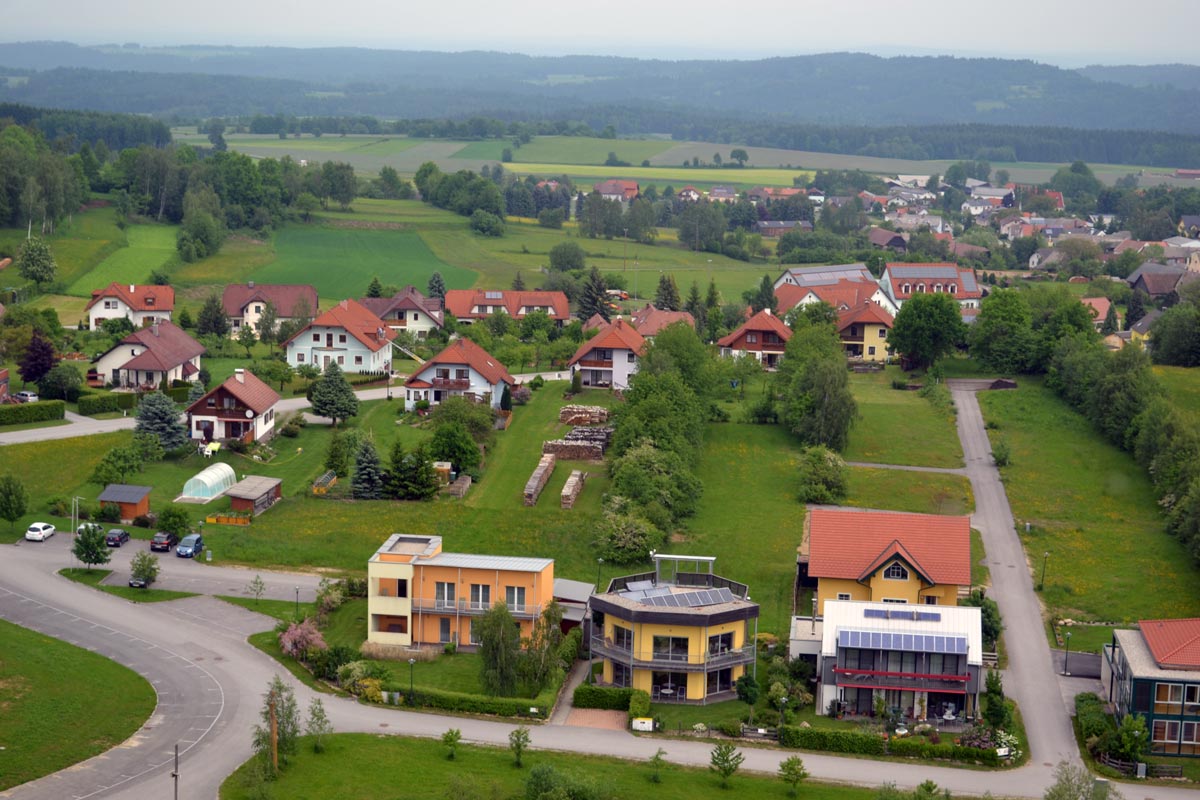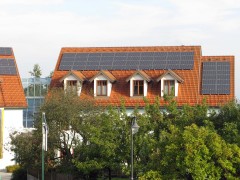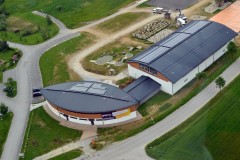If more of energy generated from renewables were consumed on-site, problems due to fluctuating rates of feed in to the grid (such as voltage ups and downs, grid overload, transport losses etc.) could be alleviated somewhat. In the project “Eigenlast Cluster” (project management: Sonnenplatz Großschönau GmbH) strategies for increasing on-site consumption of electricity and heat in buildings owned by Großschönau local council and already instrumented for data collection were investigated.
To do this, a total of 27 council buildings, business enterprises and households were grouped together in nine clusters. The buildings‘ electricity consumption profiles, plus a simulation of the photovoltaic (PV) equipment in place, made up the data baseline. The issues investigated were: which types and combinations of building are suitable for clustering, which is the best size of cluster, how much on-site consumption of electricity is feasible, and how much carbon-dioxide emissions can be reduced. The buildings‘ profiles ought to fit together in such a way that on-site consumption is maximized. With more variety in consumption patterns there would be more scope for demand-side management measures, too.
Integrating active storage facilities
The assessment also covered the issue of how much on-site consumption of electricity from PV facilities can be further increased by means of long-term hydrogen storage (summer/winter transfer) resp. by short-term battery storage (to balance day/night consumption levels). This was investigated with storage systems provided by the collaboration partner FRONIUS International GmbH. Storage batteries for PV are commercially available today, whereas hydrogen-based storage is still a vision for the future. The complete FRONIUS energy cell (electrolyser and fuel cell in a compact unit), in conjunction with hydrogen storage, takes care of storing electricity all year round.
Potential in clusters of buildings
The project results show that a PV facility can be utilized more effectively if diverse consumers are linked together in a cluster. In the case of fairly small PV units (< 10 kW) on-site consumption can be increased by (on average) 40 % if two extra consumers are tied in. Batteries and hydrogen storage can help to exploit the potential of on-site consumption, even if the costs incurred need to go down for the investment to be justified in economic terms. Below 10 kWh the storage facilities are not yet cost-effective at today’s prices. Where clusters feature a large proportion of household consumption, on-site consumption goes up by about 23 % with additional electricity storage (9.6 kWh lithium-ion accumulator). However, including hydrogen storage makes the system less cost-effective, since the hydrogen storage vessels currently available are designed for seasonal storage, and thus involve considerable fixed costs. The simulations also revealed that demand-side management measures can help to make the system more economical.
The project results can be incorporated in the planning process in forward-looking residential building. The experts recommend that building utilization and the technologies for generating and consuming electricity be closely matched to each other as early as the planning stage.
Share

